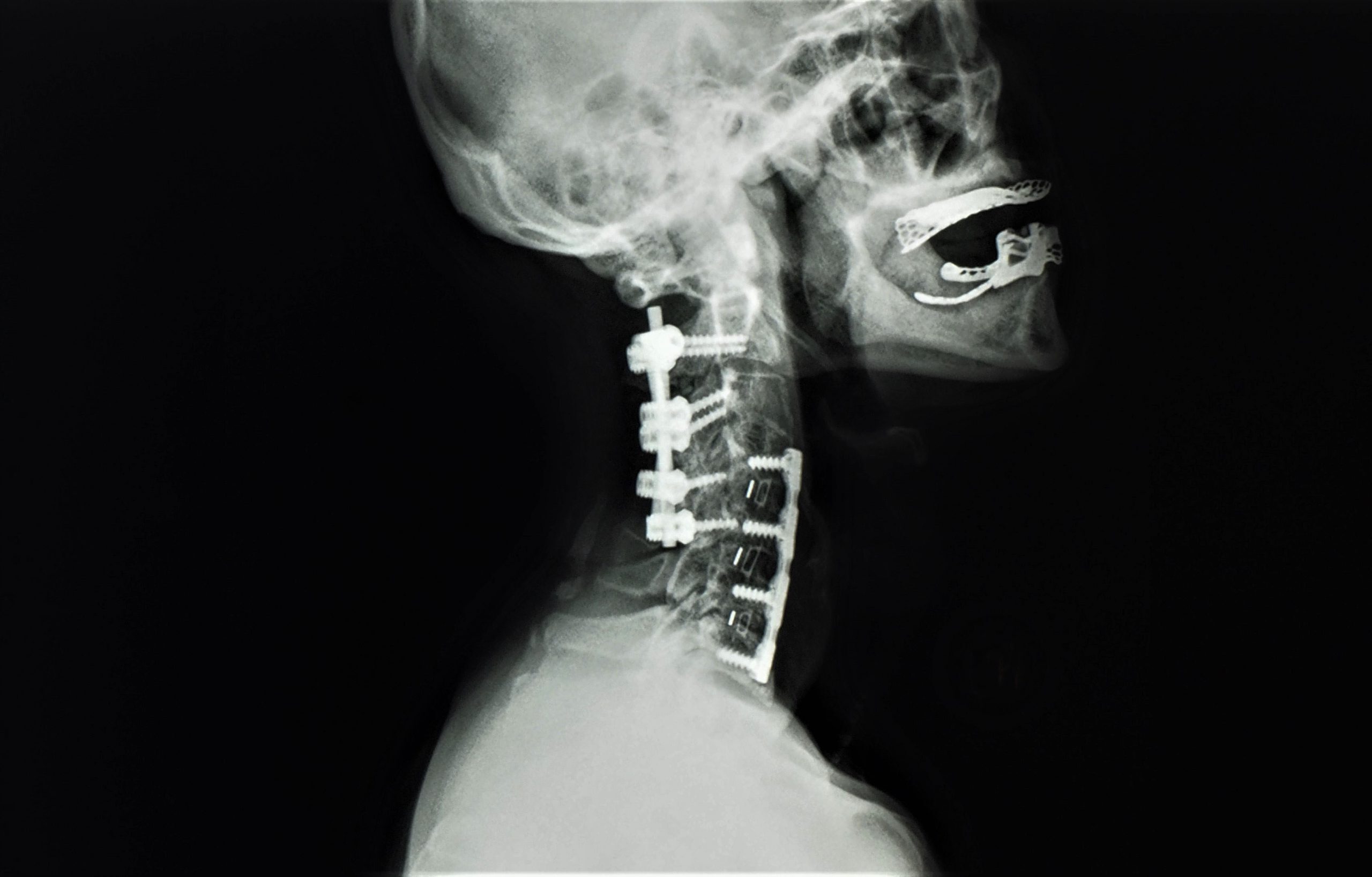
Cervical vertebral fusion might sound like a complex medical term, but it's a fascinating topic worth understanding. This procedure involves joining two or more vertebrae in the neck to stabilize the spine. Why is cervical vertebral fusion necessary? It’s often performed to relieve pain caused by conditions like herniated discs, spinal stenosis, or severe arthritis. The surgery aims to reduce movement between the vertebrae, which can alleviate pain and prevent further damage. How does it work? Surgeons use bone grafts or metal implants to fuse the vertebrae, promoting bone growth between them. Recovery can be lengthy, but many patients experience significant relief. Ready to learn more? Here are 32 intriguing facts about cervical vertebral fusion.
Key Takeaways:
- Cervical vertebral fusion is a surgery that connects neck vertebrae to reduce pain and improve function. It's successful in relieving pain and improving quality of life for many patients.
- Advanced techniques and technology have improved the safety and success of cervical vertebral fusion. Patients should consider their options and discuss potential benefits and risks with their healthcare provider.
What is Cervical Vertebral Fusion?
Cervical vertebral fusion is a surgical procedure that connects two or more vertebrae in the neck. This surgery aims to stabilize the spine, reduce pain, and improve function. Here are some intriguing facts about this medical procedure.
-
Cervical vertebral fusion is often performed to treat conditions like herniated discs, spinal stenosis, and severe arthritis.
-
The procedure can also be necessary after traumatic injuries, such as fractures or dislocations of the cervical spine.
-
Surgeons use bone grafts, metal plates, screws, or rods to fuse the vertebrae together.
Historical Background
Understanding the history of cervical vertebral fusion helps appreciate its evolution and advancements.
-
The first documented cervical vertebral fusion surgery was performed in the early 20th century.
-
Early techniques involved using bone grafts from the patient's own body, typically from the hip.
-
Modern advancements have introduced synthetic bone grafts and biologics to promote fusion.
Indications for Surgery
Certain medical conditions and symptoms indicate the need for cervical vertebral fusion.
-
Chronic neck pain that doesn't respond to conservative treatments is a common reason for this surgery.
-
Neurological deficits, such as weakness or numbness in the arms, may necessitate the procedure.
-
Cervical vertebral fusion can also address spinal instability caused by degenerative disc disease.
Surgical Techniques
Different techniques are used depending on the specific needs of the patient.
-
Anterior cervical discectomy and fusion (ACDF) is a common approach where the surgeon accesses the spine from the front of the neck.
-
Posterior cervical fusion involves accessing the spine from the back of the neck.
-
Minimally invasive techniques have been developed to reduce recovery time and complications.
Recovery and Rehabilitation
Post-surgery recovery and rehabilitation are crucial for a successful outcome.
-
Patients typically wear a cervical collar or brace to support the neck during the healing process.
-
Physical therapy is often recommended to restore strength and mobility.
-
Full recovery can take several months, depending on the individual's health and the extent of the surgery.
Risks and Complications
Like any surgical procedure, cervical vertebral fusion carries risks and potential complications.
-
Infection at the surgical site is a possible complication.
-
Non-union, where the bones fail to fuse properly, may occur in some cases.
-
Nerve damage, although rare, is another potential risk.
Success Rates and Outcomes
The success of cervical vertebral fusion varies based on several factors.
-
Studies show that the procedure has a high success rate in relieving pain and improving function.
-
Patient satisfaction is generally high, with many reporting significant improvements in quality of life.
-
Long-term outcomes are favorable, with most patients maintaining their improvements over time.
Advances in Technology
Technological advancements have significantly improved the safety and efficacy of cervical vertebral fusion.
-
Intraoperative imaging techniques, such as fluoroscopy and CT scans, enhance surgical precision.
-
Robotic-assisted surgery is being explored to further improve accuracy and outcomes.
-
Biologics, such as bone morphogenetic proteins (BMPs), are used to promote bone growth and fusion.
Alternatives to Surgery
Non-surgical alternatives are available for those who may not be candidates for cervical vertebral fusion.
-
Physical therapy and exercise can help manage symptoms and improve function.
-
Medications, such as anti-inflammatory drugs and pain relievers, may provide relief.
-
Epidural steroid injections can reduce inflammation and pain in some cases.
Patient Considerations
Several factors influence the decision to undergo cervical vertebral fusion.
-
Age and overall health play a significant role in determining surgical candidacy.
-
The severity and duration of symptoms are also important considerations.
-
Patients should discuss potential benefits and risks with their healthcare provider to make an informed decision.
Future Directions
Research and innovation continue to shape the future of cervical vertebral fusion.
-
Stem cell therapy is being investigated as a potential method to enhance bone healing and fusion.
-
Personalized medicine approaches aim to tailor treatments to individual patient needs, improving outcomes and reducing complications.
Final Thoughts on Cervical Vertebral Fusion
Cervical vertebral fusion is a fascinating topic with many layers. Understanding the importance of this procedure can help demystify its role in treating spinal issues. From relieving chronic pain to stabilizing the spine, this surgery offers significant benefits. However, it's crucial to weigh the risks and benefits before deciding. Always consult with a healthcare professional to determine if this procedure is right for you.
Remember, knowledge is power. The more you know about cervical vertebral fusion, the better prepared you'll be to make informed decisions about your health. Stay curious, stay informed, and don't hesitate to ask questions. Your spine is vital to your overall well-being, so take good care of it.
Frequently Asked Questions
Was this page helpful?
Our commitment to delivering trustworthy and engaging content is at the heart of what we do. Each fact on our site is contributed by real users like you, bringing a wealth of diverse insights and information. To ensure the highest standards of accuracy and reliability, our dedicated editors meticulously review each submission. This process guarantees that the facts we share are not only fascinating but also credible. Trust in our commitment to quality and authenticity as you explore and learn with us.


